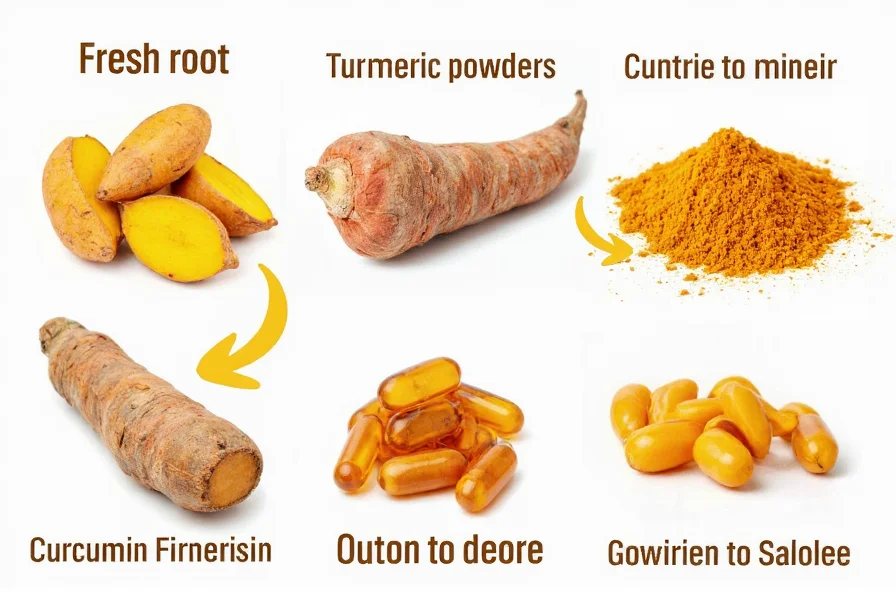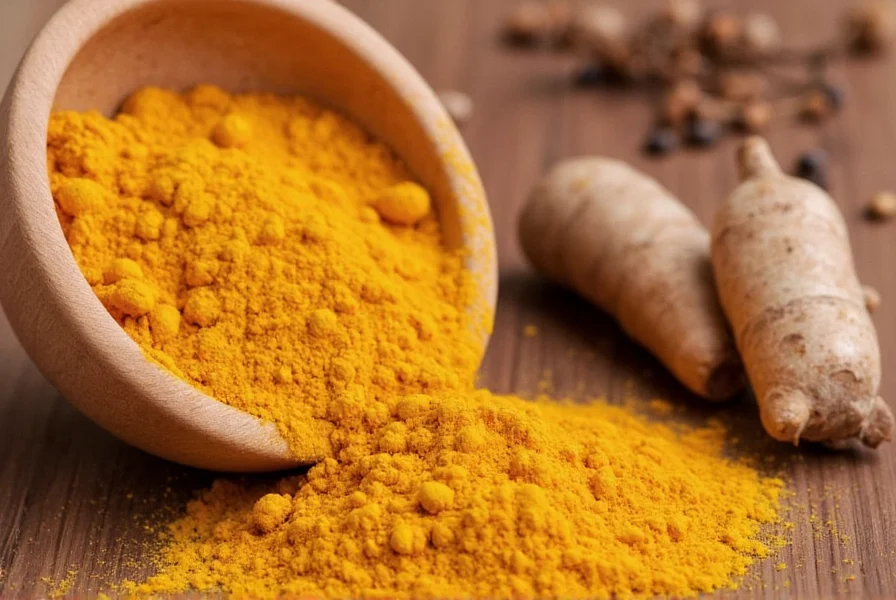For centuries, turmeric has been valued in traditional medicine systems, but modern science is now validating many of its health benefits. The golden spice contains curcuminoids, with curcumin being the most biologically active component. While turmeric contains only about 3% curcumin by weight, this compound delivers remarkable health effects through multiple physiological pathways.
The Science Behind Turmeric's Health Benefits
Curcumin works at the molecular level to influence numerous biochemical processes. Its primary mechanisms include:
| Mechanism | Biological Effect | Health Implication |
|---|---|---|
| NF-kB pathway inhibition | Reduces inflammation signaling | May help with arthritis and other inflammatory conditions |
| Antioxidant enzyme stimulation | Boosts body's natural defense systems | Protects against cellular damage and aging |
| BDNF level enhancement | Supports brain cell growth and function | Potential cognitive benefits and neuroprotection |
| Endothelial function improvement | Better blood vessel regulation | May support cardiovascular health |
Key Health Benefits Supported by Research
Powerful Anti-Inflammatory Effects
Chronic inflammation contributes to nearly all modern diseases. Curcumin's ability to block multiple inflammatory pathways makes it particularly valuable. Studies show curcumin can be as effective as some anti-inflammatory drugs, but without the side effects. Research published in the Journal of Medicinal Food demonstrated that curcumin supplementation significantly reduced inflammatory markers in people with metabolic syndrome.
For those seeking natural approaches to how does turmeric reduce inflammation, the evidence suggests consistent daily intake is key. The compound works cumulatively rather than providing immediate relief.
Antioxidant Protection Against Cellular Damage
Curcumin neutralizes free radicals while also stimulating the body's own antioxidant enzymes. This dual action provides comprehensive protection against oxidative stress, which damages cells and contributes to aging and disease. The turmeric antioxidant properties are particularly valuable for protecting lipids, proteins, and DNA from oxidative damage.
Brain Health and Cognitive Function
Curcumin increases levels of brain-derived neurotrophic factor (BDNF), a growth hormone that functions in the brain. Declining BDNF levels are associated with brain disorders like depression and Alzheimer's disease. Several studies indicate that regular curcumin consumption may improve memory and attention in healthy adults and those with mild cognitive impairment.
Joint Health and Arthritis Management
Clinical trials have shown promising results for turmeric for joint pain relief. A study in the Journal of Alternative and Complementary Medicine found that curcumin was more effective than diclofenac sodium (a common NSAID) for managing symptoms of rheumatoid arthritis. Participants taking curcumin experienced significant improvements in joint swelling, tenderness, and overall disease activity.
Practical Considerations for Maximum Benefit
Overcoming Bioavailability Challenges
One major limitation of curcumin is its poor bioavailability—it's not easily absorbed by the body. However, certain strategies can dramatically improve absorption:
- Combine with black pepper: Piperine in black pepper increases curcumin absorption by up to 2,000%
- Consume with healthy fats: Curcumin is fat-soluble, so pairing with oils or avocado improves uptake
- Heat gently: Light cooking can increase curcumin's solubility
Understanding curcumin bioavailability issues is essential for anyone wanting to maximize the scientific evidence for turmeric benefits. Without these strategies, most curcumin passes through the digestive system unabsorbed.
Recommended Intake and Forms
For general health maintenance, culinary use of turmeric (about 1-3 grams daily) provides benefits. For therapeutic effects, research typically uses 500-2,000 mg of curcumin extract daily. When considering how much turmeric should I take daily, remember that:
- Fresh turmeric root contains about 3% curcumin
- Dried turmeric powder contains about 3-6% curcumin
- Standardized curcumin supplements typically provide 95% curcuminoids

Important Limitations and Considerations
While turmeric offers impressive health benefits, it's crucial to understand the limitations of current research. Many studies use concentrated curcumin extracts rather than culinary turmeric. The what are the health benefits of turmeric question requires distinguishing between:
- Effects achievable through dietary consumption
- Effects requiring therapeutic supplementation
- Preliminary findings needing more research
Turmeric may interact with certain medications, particularly blood thinners and diabetes medications. People with gallbladder issues should consult a healthcare provider before consuming large amounts. Pregnant women should stick to culinary amounts rather than supplements.
Conclusion
The question of why turmeric is good for you ultimately comes down to curcumin's multifaceted biological activity. From reducing inflammation to protecting against oxidative damage, the is turmeric good for heart health and other benefits are increasingly supported by scientific evidence. While not a miracle cure, incorporating turmeric into your diet—especially when combined with black pepper and healthy fats—provides meaningful health advantages as part of an overall wellness strategy. The key is consistent, long-term consumption rather than expecting immediate results.
Frequently Asked Questions
How long does it take to see benefits from turmeric?
Most people notice subtle benefits after 4-8 weeks of consistent daily consumption. Anti-inflammatory effects may take 6-12 weeks to become noticeable, while antioxidant benefits work cumulatively over time. Research shows maximum benefits typically appear after 8-12 weeks of regular use at appropriate doses.
Can I get enough curcumin from cooking with turmeric?
Culinary use provides health benefits but delivers relatively low curcumin amounts. You'd need to consume about 15-20 grams of turmeric powder daily to match the 1,000-2,000 mg of curcumin used in many studies. For therapeutic effects, supplements combining curcumin with piperine (from black pepper) offer more practical dosing while maintaining the turmeric benefits for joint pain relief and other specific applications.
Does turmeric interact with medications?
Yes, turmeric may interact with blood thinners (like warfarin), diabetes medications, and certain chemotherapy drugs. Curcumin can enhance the effects of anticoagulants, potentially increasing bleeding risk. If you take prescription medications, consult your healthcare provider before starting high-dose turmeric supplementation to avoid potential interactions while still gaining the scientific evidence for turmeric benefits.
Is turmeric safe for daily consumption?
Turmeric is generally safe when consumed in food amounts. For supplements, doses up to 500 mg of curcumin two to three times daily appear safe for most people. Higher doses may cause digestive discomfort in some individuals. Long-term safety studies show no serious adverse effects at appropriate doses, making it suitable for daily use as part of a healthy lifestyle focused on the what are the health benefits of turmeric question.











 浙公网安备
33010002000092号
浙公网安备
33010002000092号 浙B2-20120091-4
浙B2-20120091-4